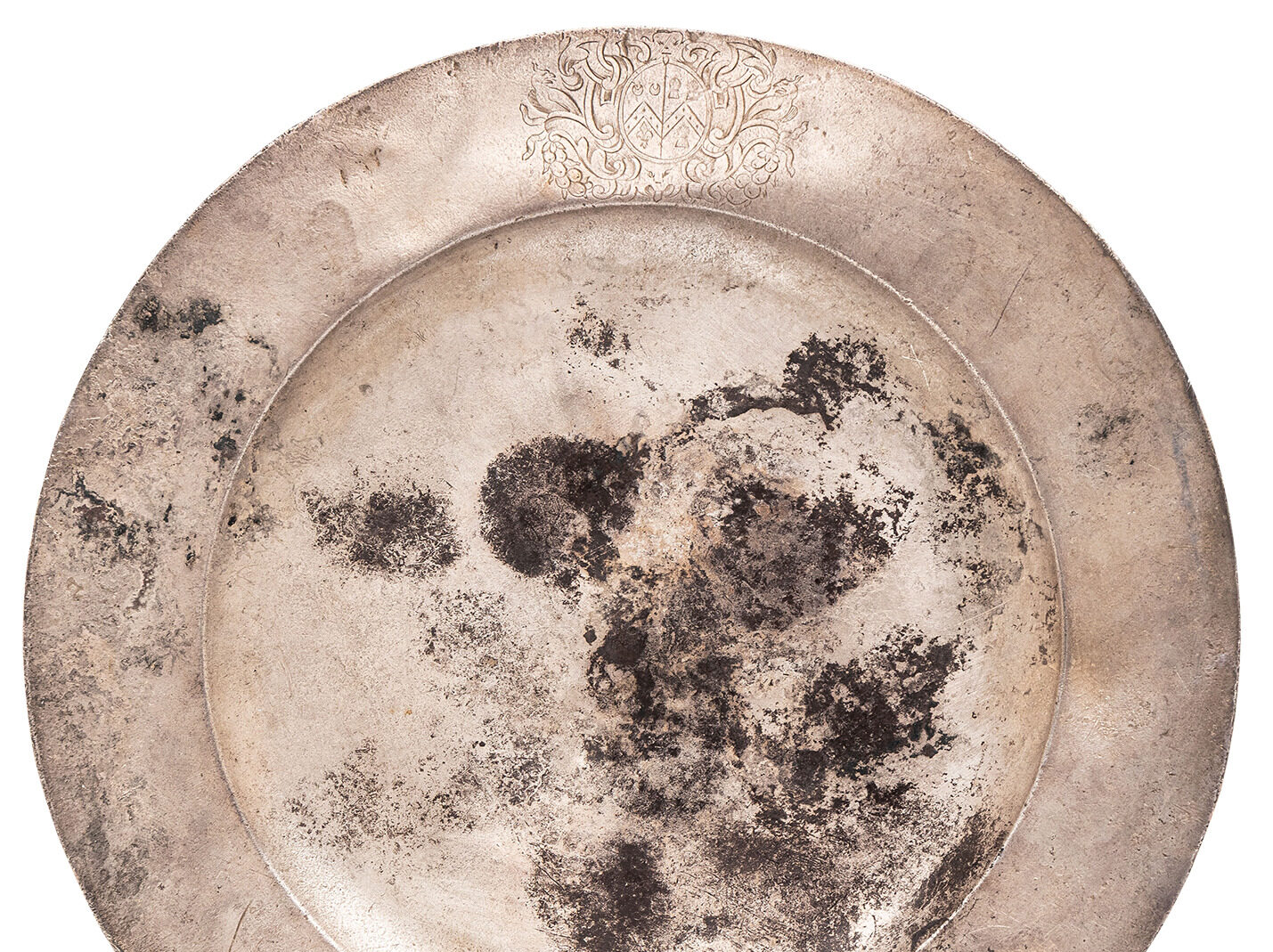The historic plate, the Admiral in charge of the Royal Navy’s worst peacetime disaster, may have been eaten his last meal from, is for sale.
Admiral Sir Cloudesley Shovell was among the 1,342 souls who perished when HMS Association and three other ships were lost on the perilous rocks off the Isles of Scilly in 1707.
The calamity changed history, prompting the Longitude Act of 1714.
READ MORE:Wallace and Gromit statues sell for incredible £2m
It led to the development of the marine chronometer, enabling sailors to calculate longitude by comparing the difference in local time at sea with the time in Greenwich.
The silver plate is engraved with Sir Cloudesley’s coat of arms and was recovered from the wreck site half a century ago.
The Queen Anne plate is one of only two known.
A similar example was sold decades ago to the Guildhall, Rochester, Kent, where Sir Cloudesley served as Member of Parliament.
Hallmarked for Anthony Nelme, London 1703, and bearing the Britannia standard, the 24cm diameter plate weighs 513.8 grams.
Included with the lot is a facsimile of a letter from the Receiver of Wreck granting title to the plate in accordance with Section 243 of the Merchant Shipping Act 1995, as reported by What’s The Jam.
HMS Association was a 90-gun Royal Navy ship, launched at Portsmouth in 1697, serving as Sir Cloudesley’s flagship in the Mediterranean during the War of the Spanish Succession.
In October 1707, the British naval fleet was returning from Gibraltar to Portsmouth, but in those days there was no accurate way of determining a ship’s precise longitude – its east-west position – at sea.
In lieu of an exact system, sailors relied on dead reckoning – a navigational technique using last-known position, speed, heading, and elapsed time.
But it didn’t take into account important variable factors such as currents and wind, meaning the mariners could not have known on which side of the Isles of Scilly they were.
The danger was magnified by bad weather.
Venturing into the notoriously treacherous waters on the edge of southwesterly England, the fleet ran into the Western Rocks off Scilly during the evening of October 22 1707.
Three ships, Sir Cloudesley’s flagship Association, Eagle and Romney, were sunk within minutes, with reportedly just one survivor from the Romney.
A fourth ship, Firebrand, also struck the rocks but was lifted off by a wave and later foundered in Smith Sound.
Estimates of the number of lives lost vary greatly, with some accounts suggesting up to 2,000.
A more accurate figure of 1,342 was estimated following the 1999 publication of a complete crew list for the wrecked vessels.
“The plate bears the admiral’s armorial on the rim and, although tarnished, dented and distorted, is in relatively good condition considering it spent more than 250 years beneath the waves,” said expert Philip Bridge.
“The hallmarks on the underside are remarkably clear, suggesting that it was submerged that side down.
“Perhaps it was from this very plate the admiral was served what turned out to be his last meal before disaster struck.”
Sir Cloudesley’s body – along with that of his greyhound dog, Mumper – was mysteriously washed ashore at Porth Hellick on St Mary’s at a spot marked today by a stone memorial.
His two stepsons, Sir John Narborough and James Narborough, sons of Sir Cloudesley’s wife from her marriage to Rear Admiral Sir John Narbrough, plus Henry Trelawney, second son of the Bishop of Winchester and the captain of the Association, Edmund Loades – the son of Rear Admiral Narbrough’s sister – also perished.
Their bodies came ashore on St Mary’s too, some seven miles from the scene of the wreck.
“No one can account with any certainty as to how the remains of an admiral and four high-ranking naval gentlemen washed up so far away,” said Mr Bridge.
“Perhaps they tried to escape in one of the flagship’s boats and were drowned while trying to reach land.”
Sir Cloudesley was temporarily buried in the sand and, at the behest of Queen Anne, later disinterred for reburial at Westminster Abbey.
He subsequently became a national hero.
“The tragic loss was a huge story at the time and sparked all kinds of folklore, such as one gruesome – and apocryphal tale – that a local woman discovered Sir Cloudesley barely alive onshore and cut off his fingers to steal his rings,” added Mr Bridge.
“Another story goes that on the journey in, one of the sailors on the Association knew the area and tried to warn his shipmates about the rocks.
“But he was judged to be spreading dissent amongst the ranks and was strung up from the yard arm.
“Within an hour, the ship had hit the rocks and was sinking fast – with that unfortunate sailor still hanging from the gallows.
“Regardless of these bloodthirsty tales, the story remains one of catastrophic loss underlying the perils of seafaring in the 18th century.”
The plate goes under the hammer with Richard Winterton Auctioneers, Lichfield, Staffs, on 27 October.
It has a guide price of £600 to £800.
READ MORE: Rare 133-year-old Bank of England £5 note for sale at £25,000… 5,000 times the original value
